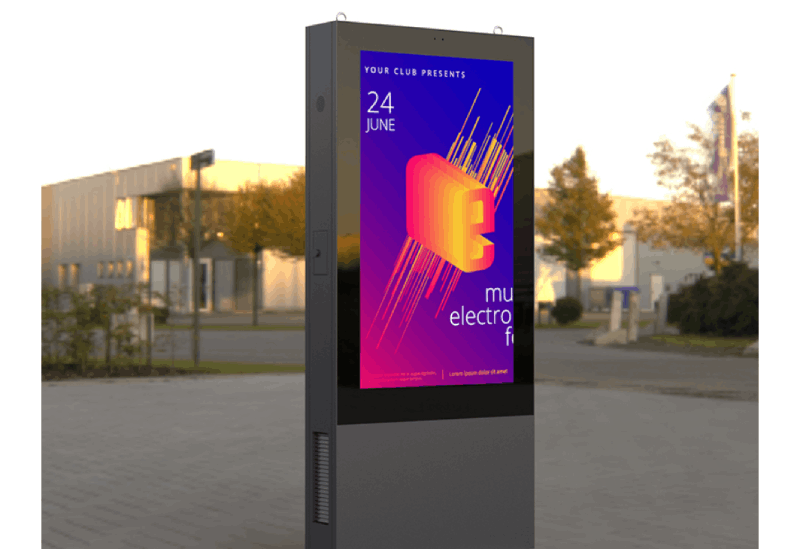
Informational kiosks have become an increasingly common sight in public spaces around the world. These interactive digital display devices offer a wealth of information, services, and opportunities to engage with the surrounding environment. From parks and shopping centers to airports and museums, informational kiosks are shaping public spaces in various ways. So let’s explore how these digital kiosks are transforming the way people interact with and experience public spaces.
A information kiosk is an interactive or non-interactive digital signage that provides people with useful information through a touch screen display. Digital kiosks allow customers to be self-sufficient and find the information they need without anyone’s help.
Digital information kiosks can be placed outdoors to guide the public, and there are also information kiosks placed indoors. The design of outdoor information kiosks (outdoor digital signage) is more solid, the brightness will be higher than indoor digital display, and they need to be waterproof and dustproof. These digital display are generally placed in shopping malls, parks, transportation hubs and other areas. Indoor interactive touch screens are generally 350nits-1500nits, which is the first choice for most industries, such as shopping malls.
One of the primary benefits of digital informational kiosks is their ability to provide timely and relevant information to the public. Whether it’s displaying maps, event schedules, or public transportation routes, these digital kiosks serve as valuable resources for visitors and residents alike. By having access to up-to-date information at their fingertips, people can make more informed decisions about their activities and navigate public spaces more efficiently.
Furthermore, informational kiosks enhance the overall visitor experience by offering interactive features. For example, in a park setting, digital kiosks can provide educational content about the flora and fauna found in the area, allowing visitors to learn and appreciate the natural environment.
In museums, these digital signage can offer detailed information about exhibits, allowing visitors to delve deeper into the artwork or historical artifacts on digital display screen. These interactive elements not only educate but also engage visitors, making their experience more immersive and memorable.
Another significant impact of digital informational kiosks is their role in promoting local businesses and attractions. Many digital kiosks include directories and recommendations for nearby restaurants, shops, and tourist destinations. This feature helps boost the local economy by driving foot traffic to these establishments and encouraging visitors to explore the surrounding area. Additionally, digital informational kiosks can provide advertising space for local businesses, enabling them to reach a wider audience and increase their visibility.
Moreover, digital informational kiosks have the potential to foster community engagement and participation. Some digital signage facilitate public surveys or feedback mechanisms, allowing individuals to voice their opinions on various topics, such as urban planning, public services, or community events. By collecting valuable input from the public, authorities can make more informed decisions that align with the needs and preferences of the community they serve. This interaction between citizens and local government fosters a sense of ownership and empowerment, ultimately strengthening the bond between people and their public spaces.
With the advancement of technology, digital informational kiosks are becoming more versatile and sophisticated. Many digital kiosks now feature touchscreens, interactive maps, and even augmented reality capabilities. These advancements enable users to access a wide range of services and information, such as public Wi-Fi, directions, and real-time updates. Furthermore, some digital kiosks incorporate accessibility features, such as text-to-speech functionality and multilingual options, ensuring that everyone can benefit from the information provided.
From busy airports to museums to shopping complexes, digital informational kiosks are making a significant impact on public spaces. These interactive touch screen are transforming the way people interact with and navigate public spaces, making them more accessible, informative, and engaging.
As technology continues to evolve, we can expect to see even more innovative uses of digital informational kiosks, further shaping the future of public spaces.